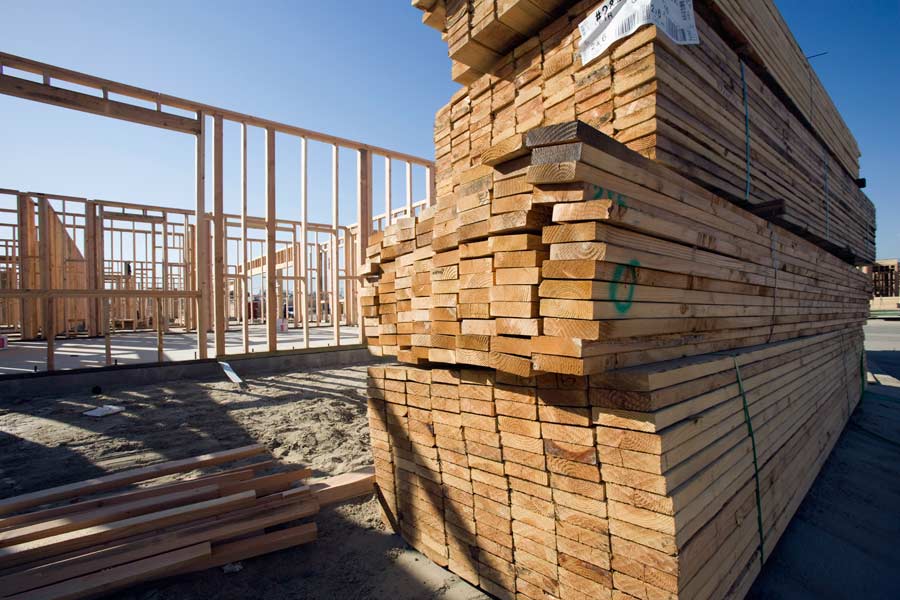Reclaiming reusable and recyclable materials from renovations and salvaging materials from deconstruction and construction sites are ways to protect the environment and establish greener practices. It can save money, preserve history and memories, and offer unique decorating opportunities. Construction companies are taking the time to find uses for many building materials that keep construction waste out of landfills and using more sustainable products. New innovations in building materials also offer added benefits for facility owners than traditional products. If you’re considering remodeling or upgrading your facilities, consider working with your contractor to incorporate some of these sustainable construction materials into your project.
Wood
Doors, trim and molding, floors and other undamaged wood can all be reused for renovations and new construction alike. There are over 1,000,000 new single family homes built each year costing nearly $100 billion. $200 billion is spent on apartments and manufactured homes, including repairs and renovations. Much of the money is spent on wood used for framing, doors, floors, windows and sheathing. Reclaiming and recycling wood could save 33 trees per house. The reclaimed wood can still be used to build new floors, doors, paneling and windows.
Reusable Building Construction Materials
Bricks, building blocks, concrete, roofing materials and other construction materials can be reused or recycled for new building projects. Even dry wall can be reused and recycled to be used in new construction as well as to create nutrient rich plant food. The paper that covers drywall can also be recycled into paper board and new wall board. There is more than 11 million tons of roofing shingle waste removed from homes each year. It can be recycled and reused in pavement projects, to fill potholes, and to make new shingles.
Recycling for Durability
Concrete and landscape waste is recyclable and reusable. 140 million tons of concrete waste is recycled or reused in roads and driveway pavement. Construction crews remove over ninety million tons of asphalt each year and reuse 90% in repaving and reconstruction projects. More than 65 million tons of steel is recycled each year because steel retains its strength and durability. The average home contains more than 400 pounds of copper wiring and piping. It is a valuable metal and can bring as much as $3 a pound. When copper, as with steel, is recycled, it retains its integrity.
Natural Materials
There are naturally sustainable materials that can be used in construction, such as bamboo used as trim, tiles, counter tops, lumber, flooring and decking; rammed earth to create building blocks; and straw used as insulation. Using recyclable materials with traditional building materials usually yields a lighter weight product with added durability. Timbercrete results from mixing sawdust with cement. Ferrock is concrete mixed with waste steel dust that has the added benefit of absorbing CO2. Using plastic instead of sand and gravel in asphalt results in plasphalt, a more durable product.
Natural and Renewable
Some recycled materials gain new life when they’re used in nontraditional ways such as denim and wool used as insulation. Wool as insulation offers many benefits because it absorbs, retain and releases moisture, depending on the temperature. It keeps homes warmer in the winter and cooler in the summer. At the end of its life cycle, it is compostable. Mushroom based building materials can be used for insulation that is stronger than concrete, offers better insulation than fiberglass and is completely compostable as well. Solar shingles can kill two birds with one stone. Solar shingles provide a durable roof and energy savings as well. Prefabricated structural insulation panels (SIPs) are airtight building systems that are well insulated and provide better control of air quality. Using SIPs creates an air tight home, which helps save on heating and cooling and increases the amount of filtered air throughout the home.
Join Sustainable Efforts
This is the year that was predicted for green sustainable practices to be used by 45% of the construction industry. Those interested in finding out more about recycling building materials and sustainable materials that are recommended, check out this article from ElementalGreen about “10 Eco Building Materials Revolutionizing Home Construction.” Whether you’re remodeling an existing facility or planning to build one from the ground up, there are all sorts of ways you can incorporate more sustainable materials into your project. Work with your contractor to see what’s possible within your time and budget constraints.






